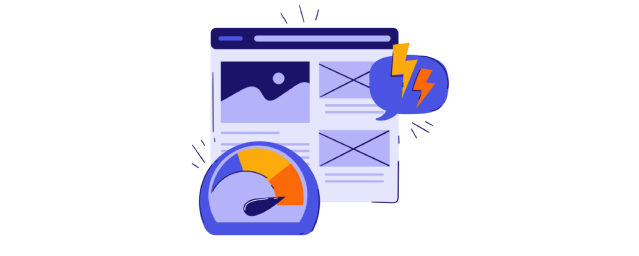Buying an HVAC (Heating, Ventilation, and Air Conditioning) business might be the perfect move for your financial future. In this article, we’ll break down how owning an HVAC business can set you up for long-term success – in a way that doesn’t sound like every other business opportunity out there.
Get HVAC Leads
Why the HVAC Industry Is a Smart Investment
When people think of essential services, they might think of doctors or plumbers, but HVAC technicians play a crucial role in keeping homes and businesses comfortable year-round. And here’s the thing: HVAC services are always in demand, no matter the economy.
- Heating and Cooling Are a Necessity: People need heating in the winter and air conditioning in the summer. This isn’t a luxury service; it’s essential for comfort and safety.
- Homes and Businesses Always Need Maintenance: HVAC systems require regular upkeep, repairs, and upgrades. That means recurring revenue for you as a business owner.
- New Technology and Energy Efficiency Trends: Smart thermostats, eco-friendly systems, and energy-efficient upgrades are booming. People want modern HVAC solutions, giving you opportunities to expand and adapt.
.
Looking for reliable HVAC leads to start off strong? Inquirly.com can connect you with high-quality leads to help your new business thrive.
Steady Demand = Steady Income
The HVAC industry is recession-resistant. Even when other businesses slow down, people can’t put off fixing their broken heater in the middle of winter or their AC during a heatwave. That makes HVAC a reliable business model.
Quick Facts:
• Growing Market: The HVAC industry is projected to grow significantly over the next decade. This means more customers and opportunities for your business.
• Repeat Customers: HVAC systems need regular maintenance and inspections, so one-time clients often become long-term customers.
Skip the Startup Struggles: Buy an Existing HVAC Business

Starting a business from scratch is tough. But when you buy an established HVAC business, you skip the risky startup phase and get straight to earning.
Benefits of Buying an Established Business:
- Existing Customer Base: You’re taking over a business that already has customers, which means cash flow from Day One.
- Trained Staff: Many HVAC businesses come with a team of trained technicians who know the ropes.
- Brand Recognition: People already know and trust the business, saving you years of marketing effort.
- Proven Systems and Processes: You get established procedures that work, so you don’t have to reinvent the wheel.
Build Wealth and Secure Your Future

Investing in an HVAC business is a path to financial security. Here’s how:
- Stable Revenue: Since HVAC services are essential, you can count on steady income.
- High Profit Margins: Skilled services like HVAC repairs and installations often come with solid profit margins.
- Expansion Potential: As you grow, you can add more services, hire additional techs, and cover new territories.
- Sell or Pass It On: When you’re ready to retire, you can sell the business for a profit or pass it down to family members.
Learn More About the HVAC Industry
If you’re considering this investment, it’s important to understand the industry landscape. For detailed insights on market trends and growth forecasts, check out this comprehensive HVAC industry analysis.
Is an HVAC Business Right for You?
You don’t need to be a technician to own an HVAC business. Many successful owners come from business backgrounds. You can hire licensed technicians while you handle the business side of things.
If you’re looking for a business that offers:
👥 Consistent Demand
📈 Growth Potential
💰 Financial Stability
Buying an HVAC business could be your key to financial freedom.
.
Where to Find HVAC Businesses for Sale
Ready to take the next step? Here are trusted websites where you can browse HVAC businesses for sale:
| Platform | Website Link | Description |
|---|---|---|
| BizBuySell | www.bizbuysell.com | A leading marketplace for small businesses, including HVAC companies. |
| BizQuest | www.bizquest.com | Offers a wide range of listings for HVAC businesses. |
| BusinessesForSale | www.businessesforsale.com | Features global listings with detailed descriptions. |
| LoopNet | www.loopnet.com | Focuses on commercial real estate and business opportunities. |
| MergerNetwork | www.mergernetwork.com | Connects buyers and sellers of HVAC businesses. |
Take the First Step Toward Financial Security
Purchasing an HVAC business isn’t just a smart move — it’s a secure investment in your future. With ongoing demand, opportunities for growth, and the chance to skip startup headaches, this might be the business venture that sets you up for life.
Ready to explore HVAC business opportunities? The future of financial stability could be just a decision away.
Support and Resources for New HVAC Business Owners
When you buy an HVAC business, you’re not alone on your journey. Many industry associations, training programs, and support networks are available to help you succeed. Organizations like the Air Conditioning Contractors of America (ACCA) offer resources, certifications, and best practices to keep you ahead of the competition. Investing in continuous learning and staying updated with industry trends can ensure your business stays competitive and profitable.
Frequently Asked Questions
What qualifications do I need to own an HVAC business?
You don’t need to be a licensed technician to own an HVAC business. Many successful owners come from business or management backgrounds. However, you will need to hire certified HVAC technicians to handle the technical work.
How do I value an HVAC business before buying it?
Evaluate the business by analyzing financial records, customer base, equipment condition, and goodwill. Key factors include annual revenue, profit margins, and the potential for future growth in the service area.
What are common challenges in running an HVAC business?
Challenges include managing seasonal demand, retaining skilled technicians, and keeping up with new technologies. Effective planning and customer relationship management can help mitigate these issues.
How can I attract new customers to my HVAC business?
Implement local SEO strategies, ask for customer reviews, offer maintenance plans, and partner with real estate agents or construction firms. Digital marketing and social media presence can also boost visibility.
What types of insurance are essential for HVAC business owners?
Essential insurance includes general liability, workers’ compensation, commercial auto insurance, and property insurance. These policies protect your business from potential risks and liabilities.




















